Share
- Jump to:
Consumers are in a place of constant bombardment of messaging and interaction with brands. These touch points are manifested across all digital mediums, and the market is heavily saturated with brands all pushing the same goals. In the midst of so much noise, it’s challenging to find ways to separate from the competition and stand out in such a crowded space. Personalization is key to standing out, but how do you achieve it at scale across hundreds of thousands of customers?
In this article, we’ll go through 5 tips and tools to add personalization across the various digital mediums your brand takes up space and how to pull those tactics through to brick and mortar.
1. Bye, Static Menus…Hello, Dynamic Menu
So many new developments are being made in the AI space, and one of the most interesting spaces we’re seeing this technology play out is in restaurants. With AI, one-size-fits-all menus are a thing of the past, and Dynamic Menus are popping up with some of the most influential brands such as Papa Gino’s and Ravagh Persian Grill. Dynamic Menu, pioneered by Lunchbox, allows for brands to automate menu changes based on external events such as the local weather and personalize featured menu items to the guest.
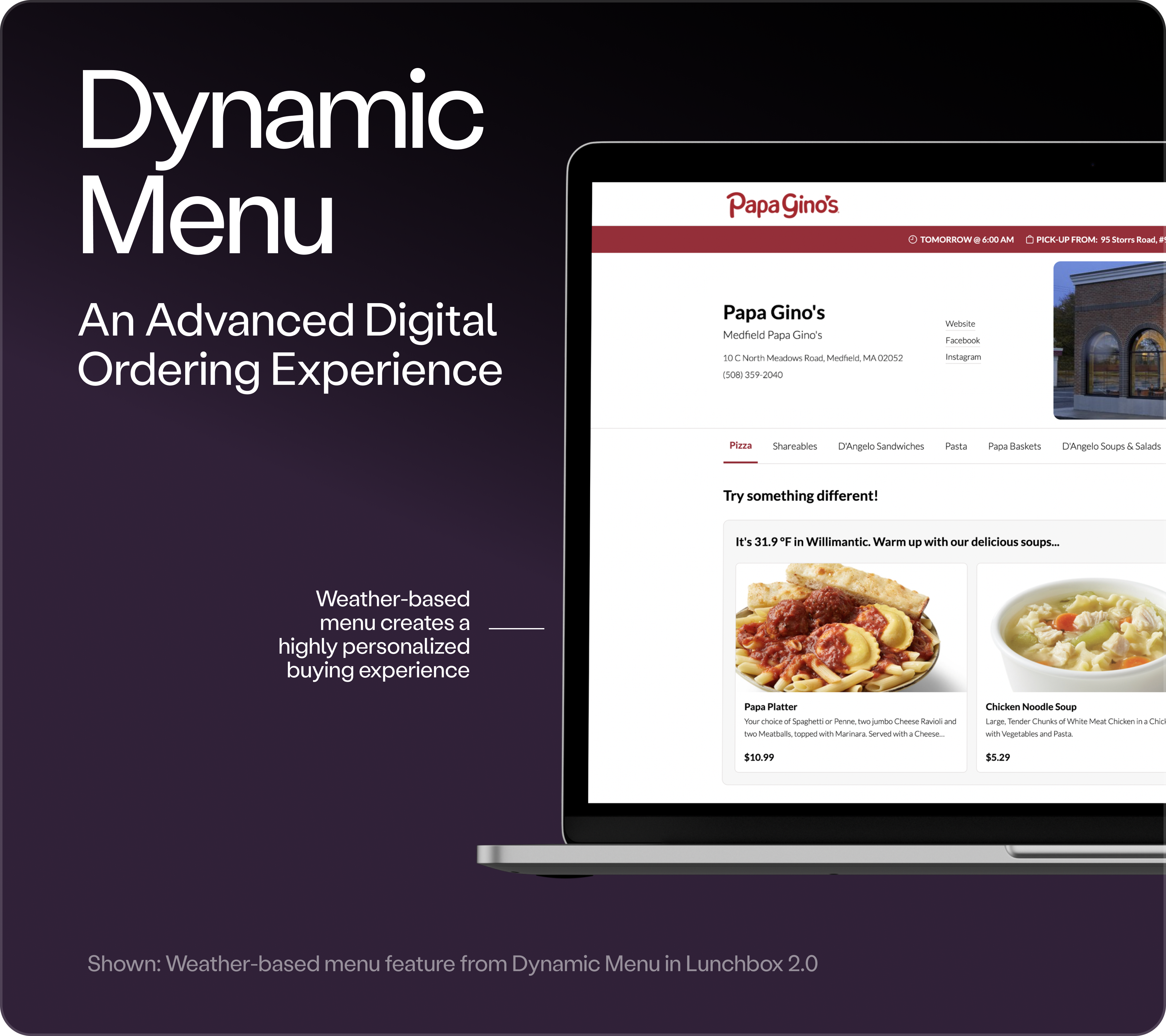
Weather based menu items create a personalized buying experience centric to the environment the guest is living in. If it’s snowing, offering hearty comfort dishes top of the menu, running limited time offers on soups or hot dishes, and offering discounted delivery options is a great way to make the ordering experience feel tailored to individual guests.
2. Personalize Your Email Communications with List Segmentation
Not only is Segmentation a best practice when it comes to email marketing, proper segmentation is also a scalable way to personalize your email communication to groups of guests based on their buying behaviors or preferences. It’s important to create segmented email audiences so you can ensure that you are delivering relevant and valuable content to your customer base and not just blasting unnecessary noise across your brand’s entire contact list.
Consider the fact that not all of your customers are the same – some may prefer tea to coffee, vegetarian options to meat, or pasta over pizza. Using your restaurant data, you can slice and dice customers based on their ordering habits. This way, when launching a new menu item or seasonal special, you can target the guests who care the most, and avoid unsubscribes from the guests who wouldn’t find that information relevant. Segmenting lists drives stronger results – referencing Lyris Annual Email Optimizer Report, you can see the long list of improvements by segmenting email lists below.
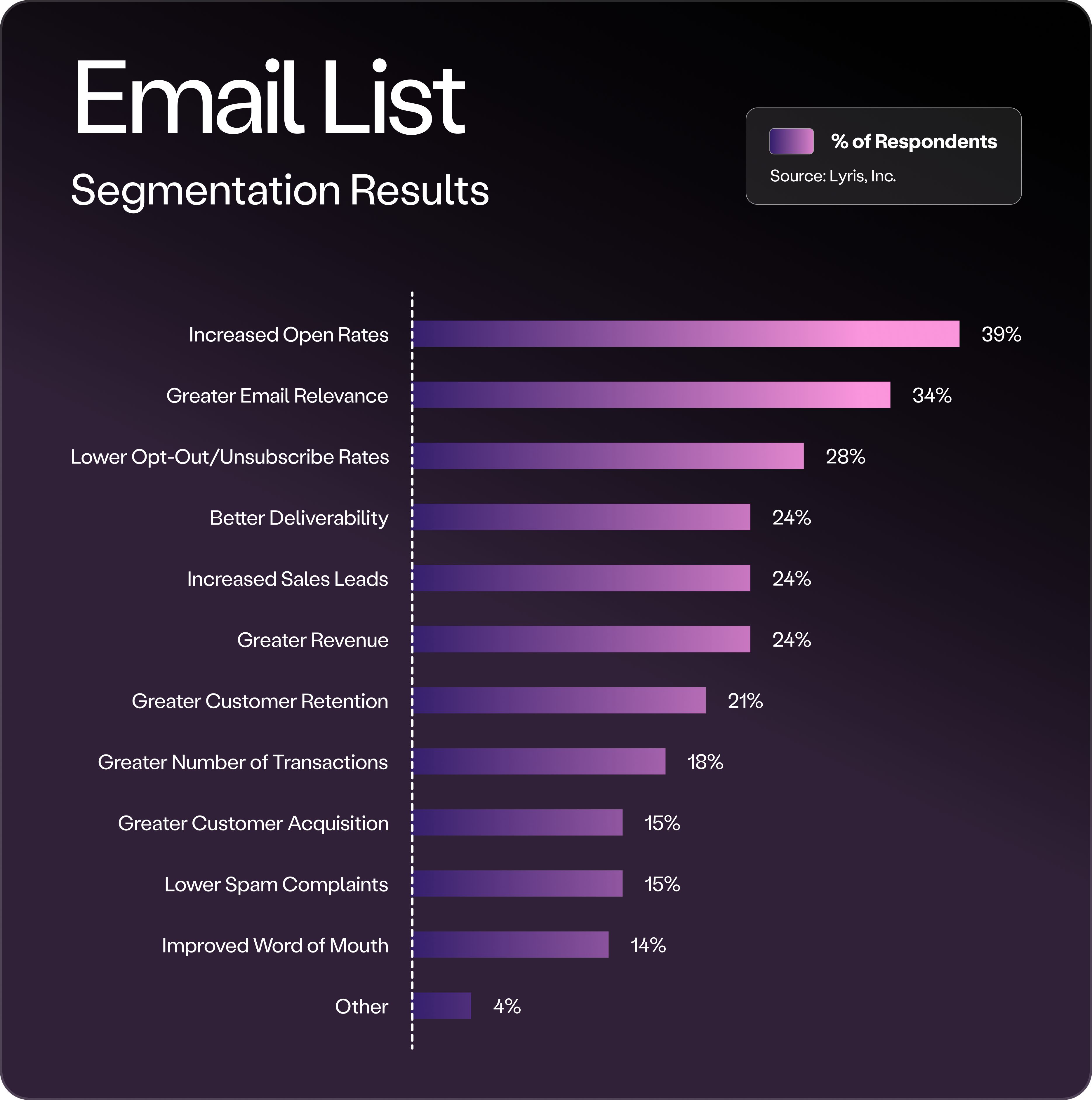
Consider segmenting your guests by different attributes and characteristics like favorite menu category, loyalty tier, zip code, or use of a promotion code in a marketing campaign to name a few.
Segmenting by loyalty tier or lifetime spend is a great way to target your “VIP” customers, or those who are hyper loyal to your brand. These are your high spenders, and it’s worth investing in them with limited time offers, menu exclusives and more. Using VIP segmenting with Zullee, their high value customers email sees an open rate of 90%.
By segmenting your guests based on zip code for example, you can localize messaging, offers, or imagery based on the characteristics of the area code. An example of this would be the store photos used in an email or a subject line that includes the name of the city and says “Hey, Boston” or “Hey, New York”.
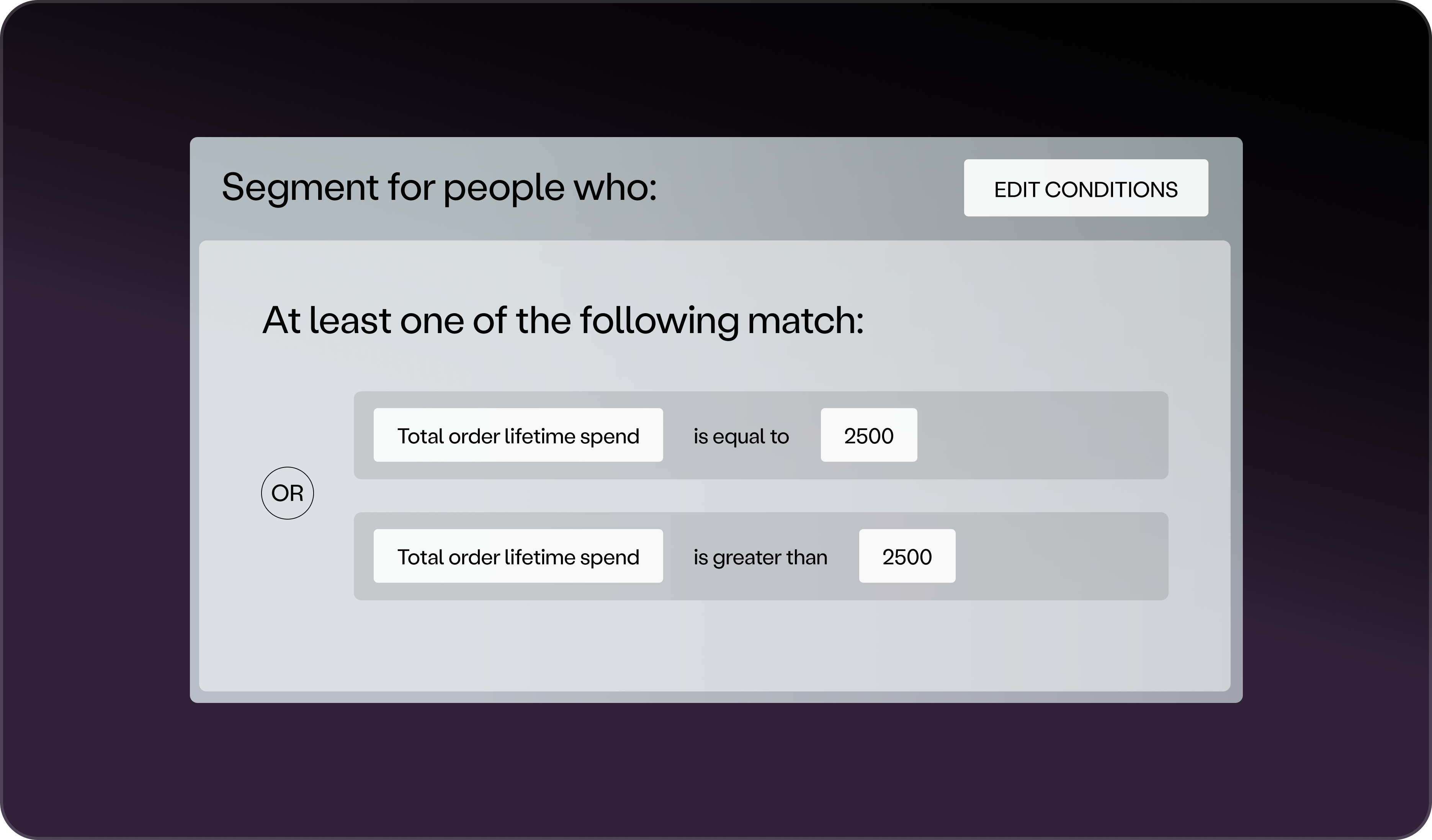
3. Boost Email Engagement and Customer Satisfaction with Merge Tags
Personalization does not stop with segmentation. There is opportunity to personalize subject lines and email content as well. As per the findings in the Inbox Insights 2022 report, it was revealed that almost 60% of the top-performing email marketers believe that personalization is a top strategy for boosting engagement levels. Furthermore, it’s what customers want. Research conducted by McKinsey & Company shows that personalized marketing is expected by 71% of consumers and the absence of it causes frustration for 76% of them.
Merge tags are one of the simplest ways to personalize emails at a very low lift to the email marketer. What is a merge tag? A merge tag is related to an attribute, or data point, collected and associated with guests. For example, “first name”, “favorite item”, “total loyalty points earned”, and “total number of orders placed” are a few data points that you can use to personalize your emails through the Lunchbox x Customer.io email platform integration. By using the merge tag “first name” in an email, you can create a subject line that addresses the customer directly by name.
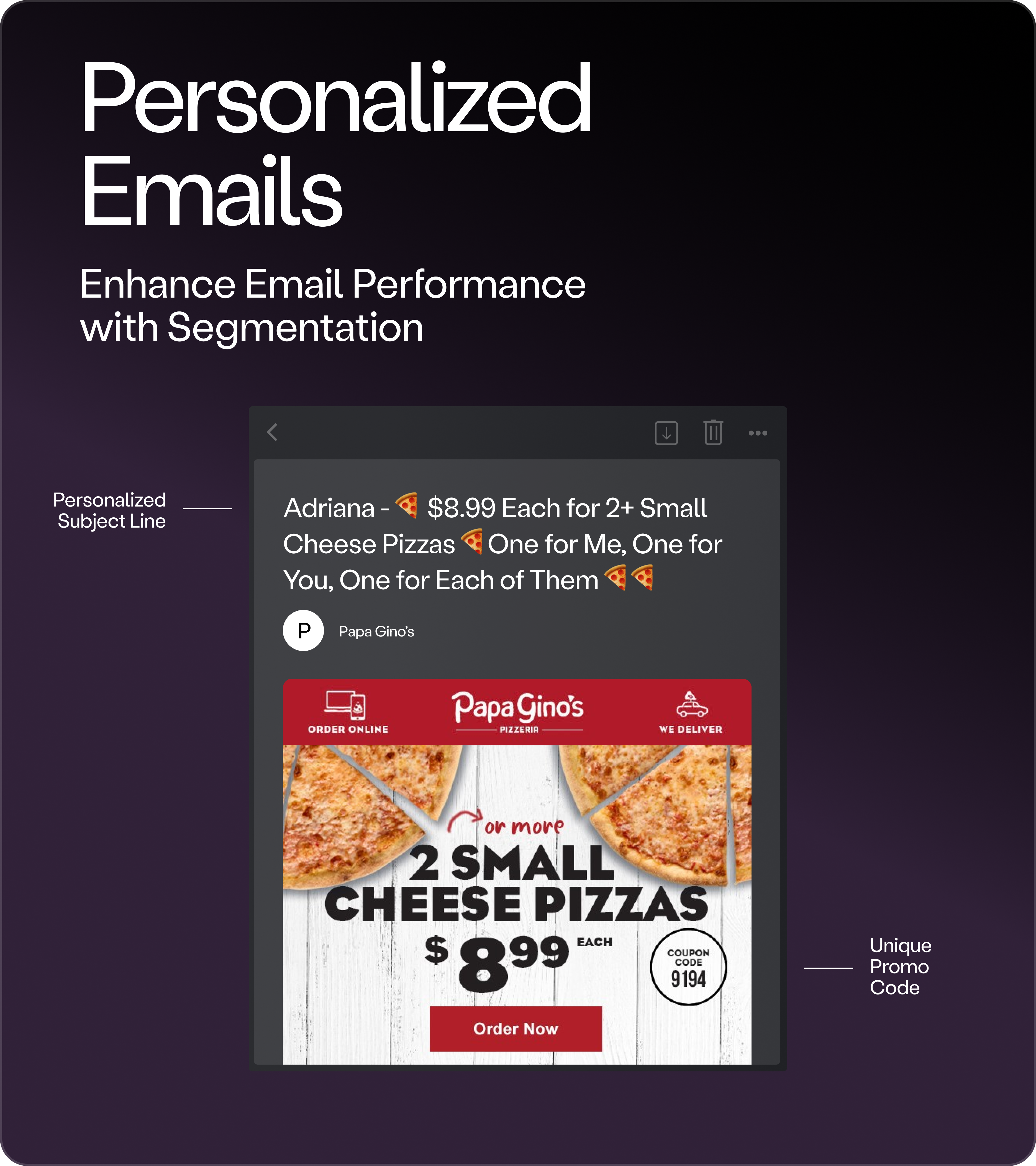
In the example above, Papa Gino’s addresses the guest directly by first name, and inside the email is a unique promo code specific to the guest. A touch as small as personalizing the subject line can drive serious results.
The result of segmenting emails based on consumer behavior and then layering on personalization via merge tags enables messaging that feels more tailored, specific and interesting to the guest. Instead of blanketing one email across all guests, emails are customized to the segments and therefore we see improvements in open rates, click through rate, and overall conversions. According to Hubspot: the most effective email marketing campaign strategy is subscriber segmentation.

4. Personalized Landing Pages to Drive Conversion Growth
A personalized page goes a long way – in fact, a study by Hubspot showed that personalized CTAs convert 202% higher than the generic version, and according to Periscope, dynamic landing pages that change based on the audience viewing them convert 25% higher on mobile.
Personalization can include displaying the guests first name, city, local weather, company (big for catering), or localizing a headline with local slang to name a few. Any restaurant with presence across multiple markets (even down to the boroughs if we’re talking NYC) should be able to tailor and localize their messaging based on the zipcode. This can be challenging at scale without the proper team or tools in place.
Thankfully, there are solutions already out there. Using tools like Mutiny or Unbounce, brands can ensure that guests landing on their website, campaign pages, and product pages are getting an experience that feels made for them.
5. Create a Hyper-Personalized Buying Experience with Online and App Ordering
What do you get with a 3rd party ordering service or a poorly designed native web and app ordering system? No personalization, and little control over enhancing guest experience. With Lunchbox’s web, app, and loyalty products, restaurants can easily provide a personalized ordering experience across app web and catering platforms – creating a seamless extension of the in-store ordering experience a loyal customer would have.
Having a personalized online and app ordering experience is crucial. In the example below, we see Wings Over greeting the customer by first name once they open the mobile ordering app.
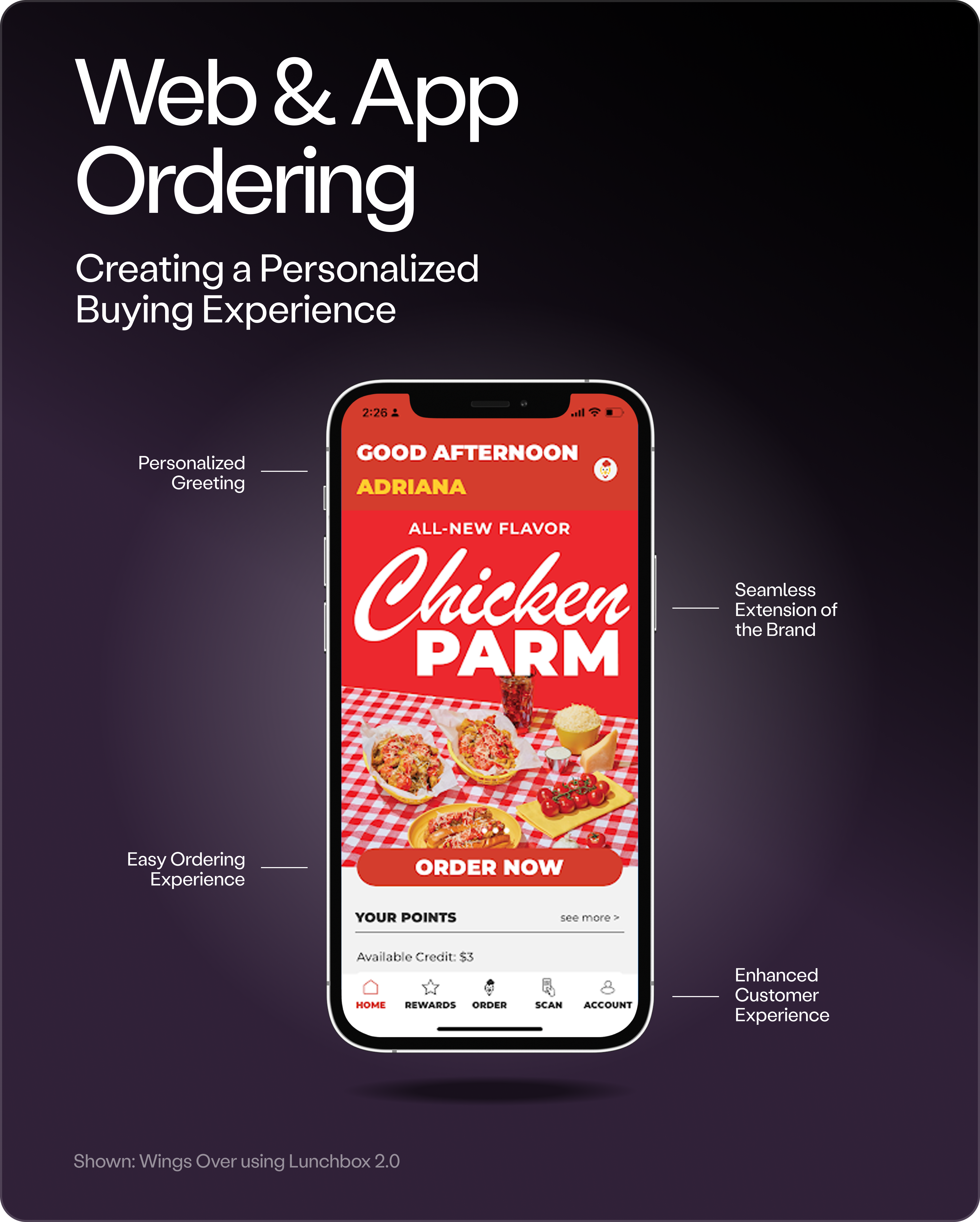
There’s something special about going into your local cafe or restaurant and being greeted by name or having the barista or wait staff know your regular order - it instills a sense of community that is vital for brand loyalty. With online ordering, restaurants are provided with every guest's name neatly printed on the order ticket – allowing staff to either greet the customers by name, or add small touches like writing the customers name on the to-go bag with a smile that goes a long way.
Additionally, guests are greeted by name in-app and online, and see a “dashboard” of sorts displaying their loyalty status, favorite menu items, and a content hub welcoming them to further engrain themselves in the brand. These details, layered with Dynamic Menu on top, create a hyper-personalized buying experience.
To Sum It Up
In a world where brands are constantly vying for the attention of consumers, personalization is the key to standing out. However, achieving personalization at scale can be a challenge. In this article, we've outlined five strategies that restaurants can use to personalize their guest communications and stand out in a crowded market. These include implementing dynamic menus, segmenting guests, using merge tags, personalizing landing pages, online and mobile app ordering, and providing guests with tailored recommendations. To achieve personalization at scale, we recommend booking a demo with Lunchbox.io. Their innovative technology helps restaurants automate menu changes, personalize menu items, and create a personalized buying experience for their guests. By implementing these strategies, restaurants can create personalized experiences for their guests that drive loyalty, engagement, and ultimately revenue.